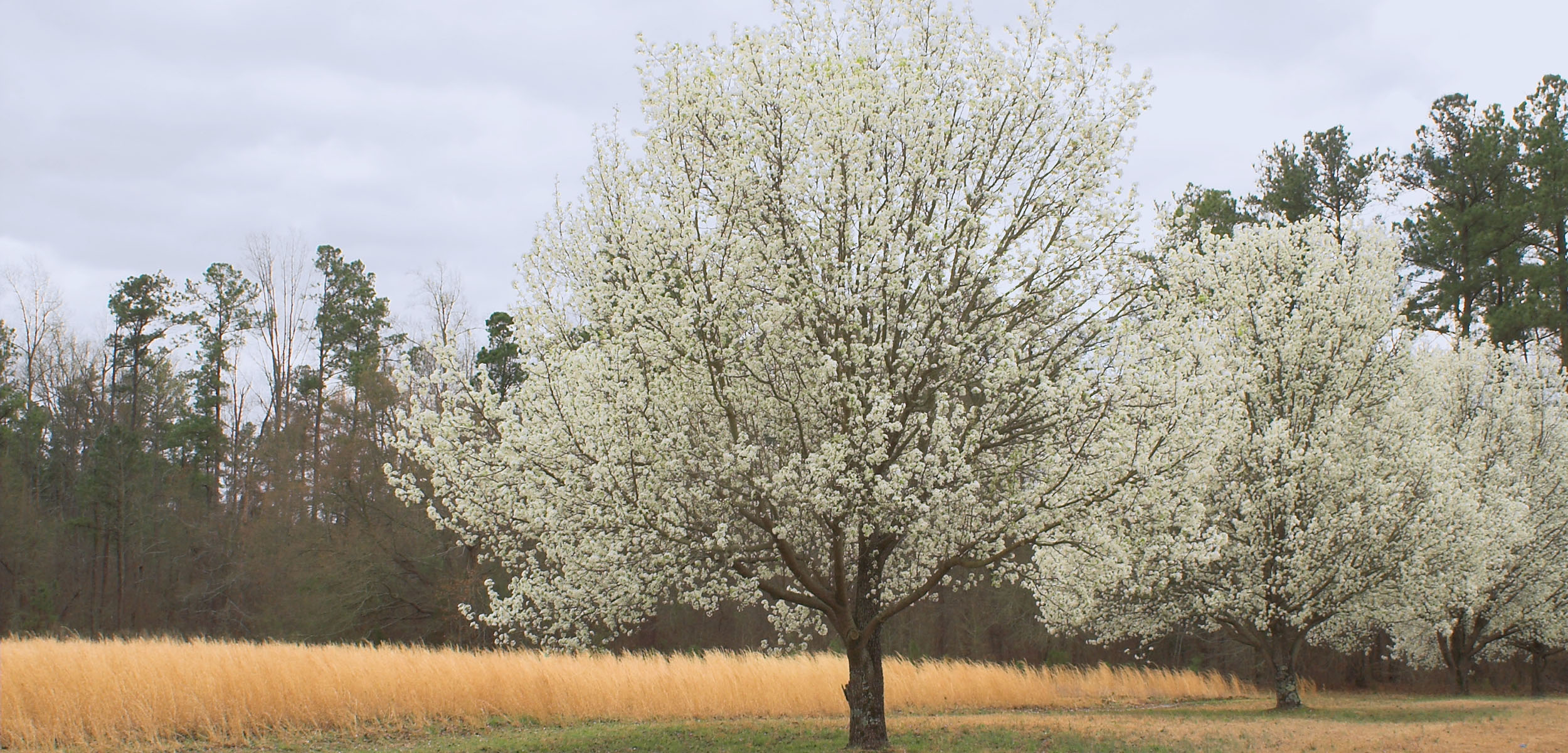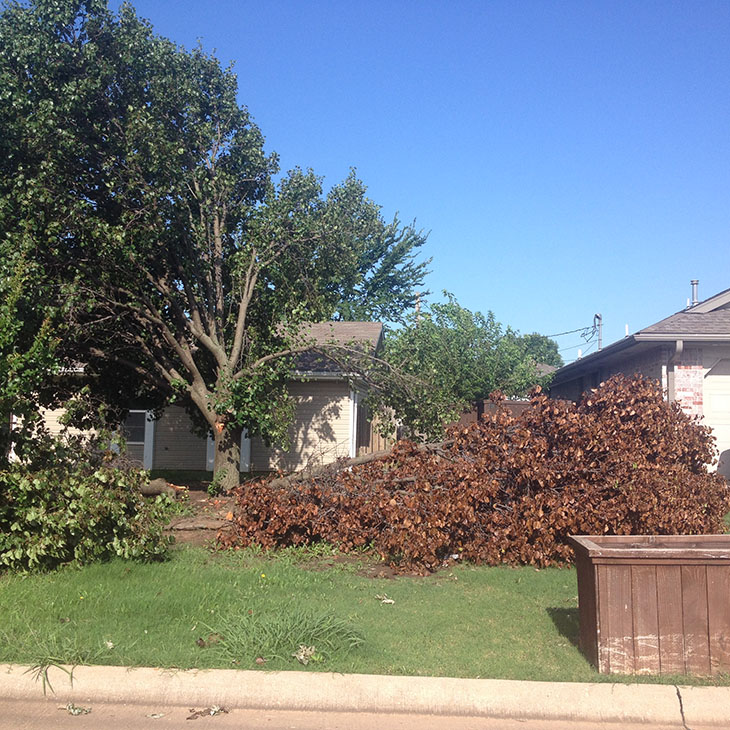
Callery pear causes issues in landscape and pastureland
Tuesday, April 6, 2021
Media Contact: Trisha Gedon | Communications Specialist | 405-744-3625 | trisha.gedon@okstate.edu
The visually pleasing Callery pear tree, with its white flowers in the spring and colorful foliage in fall, can be more of a nuisance than a blessing, quickly overtaking pastures and grasslands.
Fortunately, there are landscaping alternatives that are less environmentally disruptive.
Dwayne Elmore, Oklahoma State University Extension wildlife specialist, said the Callery pear – better known by its cultivar name of Bradford – was brought to the U.S. in the early 1900s. Callery pear was widely planted in the 1960s as a street and ornamental tree.
“Introduced from Asia in an attempt to fight the fire blight of the common pear, the Callery pear is invasive,” said Elmore, the professor and Bollenbach Chair in OSU’s Department of Natural Resource Ecology and Management. “The seeds are easily dispersed by birds, which allows the tree to invade open spaces, including agricultural land. Its rapid growth quickly fills in these open spaces, converting them to woodlands. This reduces forage for livestock and also reduces habitat for wildlife such as bobwhite and wild turkey.”
The trees have the ability to form dense thickets that shade out native species, causing a rapid change in plant and wildlife communities. The Callery pear is a significant threat to native grasslands and grassland wildlife. Callery pear also can invade forests.
Casey Hentges, host of OSU Extension’s television program Oklahoma Gardening, said due to the dense structure, the Callery pear is an excellent roosting tree for blackbirds, grackles and starlings, all of which can be problematic in neighborhoods and urban areas due to defecation on cars and sidewalks.

“Although the callery pear is a nice looking tree in the landscape and provides shade around the home, it’s a weak tree and easily damaged by ice and wind, both of which Oklahomans are very familiar. If planted near powerlines, homeowners likely will be dealing with power outages during a storm due to limbs falling on power lines,” Hentges said. “In addition, the flowers on the tree produce an unpleasant smell of rotting fish.”
When it comes to control, Elmore said zero tolerance for Callery pear is recommended.
“This species of tree is even harder to control and eradicate than the native eastern redcedar. Unless completely uprooted, you’re going to need herbicides for control,” he said. “Callery pears are prolific seed producers, with saplings producing seeds as early as three years of age. Farmers, ranchers and homeowners likely will need follow-up treatments to keep these trees under control.”
There are several different native trees that make great alternatives to the Callery pear in Oklahoma landscapes. For example, the eastern redbud, American plum, Mexican plum and Carolina buckthorn are readily available, look great in the landscape and are noninvasive.
See what else Elmore and Hentges have to say about the Callery pear in this segment of Oklahoma Gardening. More information about the tree is available on OSU Extension’s website. Additional information on invasive plants and pests is available on the Oklahoma Invasive Plant Council’s website.
